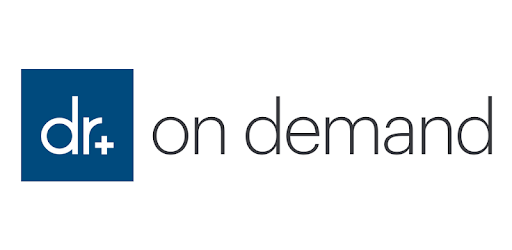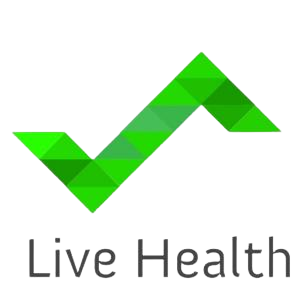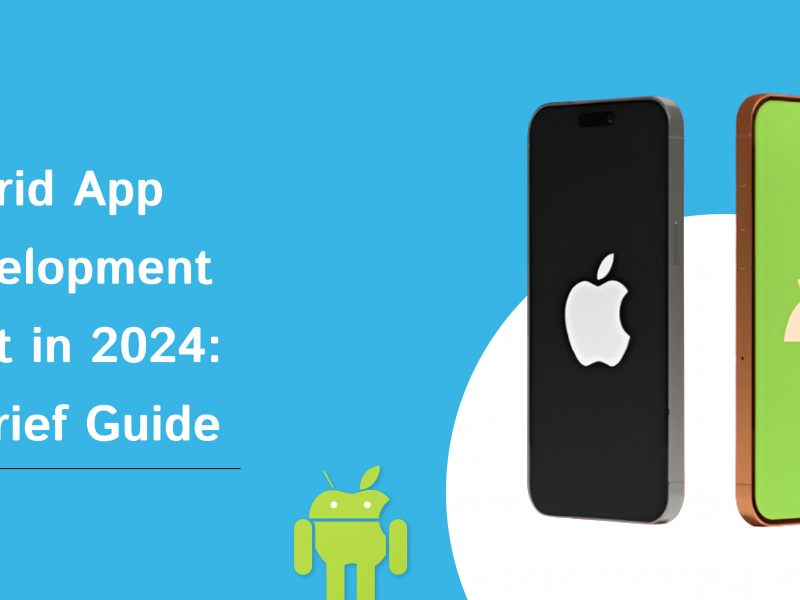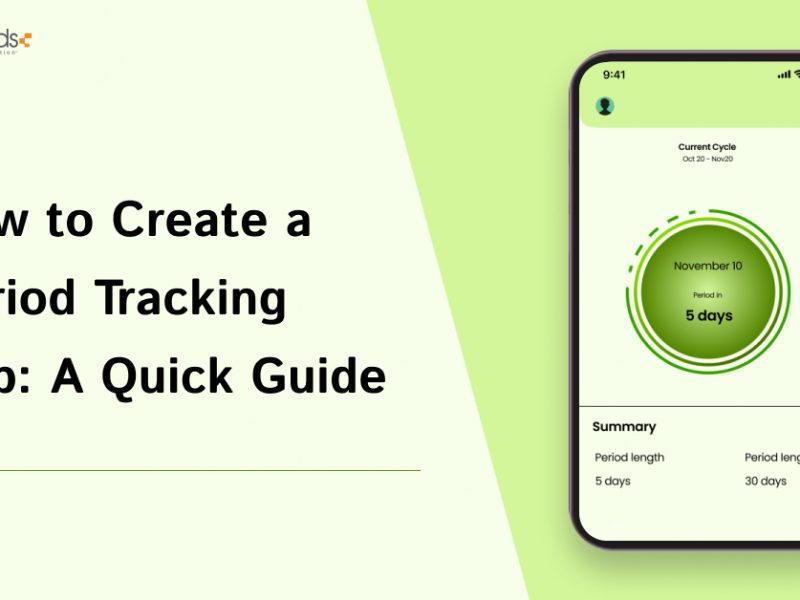Last updated on December 22nd, 2023 at 06:54 am
Are you looking forward to developing a telemedicine app for your business? If yes, then you are on the right path. Developing a telemedicine app for your business will provide unseen growth and gradually increase your audience.
The recent global pandemic showed the need for technological advancements in the healthcare industry. For those living in unreserved or remote areas, access to healthcare services is limited. In such a case, telemedicine applications will prove to be revolutionary for your business.
According to research, the global telemedicine market is expected to be worth $459.8 billion in the year 2030 with a CAGR of 24% from 2023 to 2030. Considering the growth, it seems to be a perfect time for business owners to create telemedicine app.
So, below we will discuss every necessary aspect related to telemedicine app development including its benefits to business, working process, features for users, and other necessities.
What is A Telemedicine App?
A Telemedicine app is simply a healthcare software application that delivers healthcare services to end users via mobile devices. This app serves patients with a secure user interface to transfer medical reports with the preferred physicians and consult to get quick diagnosis.
Telemedicine applications offer a variety of services that increases remote healthcare operations. By using a telemedicine app, patients and medical professionals can connect with each other in their comfort zone.
The app has revolutionized the way people can access regular check-ups and other medical services in emergency cases, proving life saving for patients.
The lower expense of smooth operations and medical services has made telehealth an accepted procedure. This is exactly what encourages all practitioners to consider telemedicine app development. Moreover, telemedicine has also attracted high attention from doctors, clinics, and patients.
Why Does Your Healthcare Business Need A Telemedicine Application?
A telemedicine application is becoming increasingly essential for healthcare businesses due to its numerous benefits that enhance patient care, streamline operations, and improve overall efficiency.
Here are detailed reasons why a healthcare business should consider investing in a telemedicine application:
1. Expanded Access to Healthcare Services
Telemedicine applications break down geographical barriers, providing patients with remote access to healthcare services. This is particularly crucial for individuals in rural or underserved areas, where physical healthcare facilities might be limited.
Patients can consult with healthcare professionals without the need for extensive travel, improving overall healthcare accessibility.
2. Convenience for Patients
Telemedicine applications offer unparalleled convenience for patients by enabling virtual consultations from the comfort of their homes. This is especially beneficial for individuals with mobility issues, busy schedules, or those seeking routine follow-up appointments.
The convenience factor encourages more individuals to seek timely medical advice and follow through with recommended treatments.
3. Time and Cost Savings
For both patients and healthcare providers, telemedicine applications contribute to significant time and cost savings. Patients can avoid travel time and expenses associated with in-person visits, while healthcare providers can optimize their schedules with more efficient use of time, potentially seeing more patients in a day.
4. Improved Chronic Disease Management
Telemedicine applications play a vital role in managing chronic conditions by facilitating continuous remote monitoring. Patients with conditions such as diabetes, hypertension, or heart disease can use connected devices to share real-time health data to healthcare professionals. This allows for proactive intervention, reducing the risk of complications and hospitalizations.
5. Enhanced Continuity of Care
Telemedicine applications contribute to improved continuity of care, allowing healthcare professionals to maintain regular communication with patients.
Follow-up appointments, medication management, and post-hospitalization care can be efficiently conducted through virtual consultations, ensuring a seamless and consistent healthcare experience.
6. Optimized Healthcare Resource Utilization
By leveraging telemedicine applications, healthcare providers can optimize the use of resources. This includes reducing unnecessary emergency room visits, minimizing wait times, and allocating resources more effectively. It enables healthcare facilities to focus on critical cases while providing routine care through virtual channels.
7. Patient Engagement and Education
Telemedicine applications serve as valuable tools for patient engagement and education. A telemedicine app development for doctors can deliver personalized health information, medication reminders, and lifestyle recommendations to patients, fostering a more proactive approach to healthcare. This engagement can lead to better patient compliance and improved health outcomes.
8. Emergency Consultations and Triage
Telemedicine applications are instrumental in emergency situations, allowing for rapid consultations and triage. Patients can receive immediate medical advice, and healthcare professionals can assess the urgency of cases remotely. This can potentially prevent unnecessary emergency room visits and ensure that critical cases receive prompt attention.
Emerging Technologies to Use in Telemedicine Platform Development
Telemedicine apps continue to evolve with the integration of cutting-edge technologies. These technologies enhance the quality of remote healthcare services.
Here are several emerging technologies that can be effectively utilized in telemedicine applications:
AI and ML
Telemedicine applications are rapidly incorporating cutting-edge technologies such as Artificial Intelligence (AI) and Machine Learning (ML) are at the forefront. They offer diagnostic support by analyzing patient data, medical images, and symptoms.
Moreover, these technologies can recommend personalized treatment plans based on extensive datasets, enhancing the precision and efficacy of healthcare interventions.
Blockchain Technology
Blockchain technology is making waves in telemedicine by ensuring secure and transparent data storage. It mitigates the risk of data breaches and unauthorized access, providing a robust foundation for protecting sensitive patient information.
Smart contracts, enabled by blockchain, automate various processes within telemedicine apps, including scheduling appointments, billing, and securely sharing medical records.
IoT
The Internet of Things (IoT) is playing a pivotal role in remote patient monitoring. Wearables and connected sensors facilitate real-time tracking of vital signs and health parameters, empowering healthcare professionals to proactively manage patients’ well-being.
Additionally, IoT devices contribute to medication adherence through smart pill dispensers and trackers that send reminders and monitor consumption.
AR and VR
Augmented Reality (AR) and Virtual Reality (VR) technologies are enhancing the telemedicine experience. They provide immersive virtual environments for remote consultations, particularly valuable in fields like physical therapy and mental health.
These technologies also find applications in training simulations, allowing healthcare professionals to refine their skills in a virtual setting.
NLP
Voice recognition technology is streamlining administrative tasks in telemedicine. It facilitates efficient and accurate transcription of medical notes, reducing the burden on healthcare professionals.
Voice-activated virtual assistants powered by natural language processing (NLP) enhance patient engagement by providing instant responses to queries, scheduling appointments, and offering relevant health information.
Telehealth Robotics
Telehealth robotics introduces the concept of remote examination, allowing healthcare professionals to perform comprehensive assessments virtually. Robotic devices equipped with cameras and sensors contribute to a more thorough virtual healthcare experience.
Additionally, telehealth robots can assist in medication delivery and monitoring, especially beneficial for patients with mobility challenges.
Biometric Authentication
Biometric authentication methods, such as fingerprint or facial recognition, enhance the security of telemedicine apps. These methods ensure that only authorized individuals can access sensitive information, adding an extra layer of protection to patient data. Biometrics also play a role in patient identity verification during virtual consultations.
Edge Computing
Edge computing brings real-time data processing closer to the source, reducing latency in telemedicine applications. This technology enables the swift analysis of patient data, ensuring timely and accurate information for healthcare providers. Moreover, edge computing enhances data privacy by processing sensitive health information locally.
What to Consider When You Create a Telemedicine App?
|
Sr. No. |
Points to Consider |
Importance |
|
1. |
Regulatory Compliance | Developers must prioritize a deep understanding involving navigating legal frameworks such as HIPAA or GDPR to guarantee the lawful handling of patient data. Robust data protection measures should be implemented to safeguard patient information and ensure the confidentiality of healthcare interactions.
|
|
2. |
Intuitive UI | A user-friendly interface is paramount for a successful telemedicine app. The design should be intuitive, providing easy navigation for users of all technological proficiency levels. Moreover, accessibility considerations are crucial, requiring designs that accommodates users with diverse abilities and needs to ensure an inclusive experience. |
|
3. |
Security Measures | Implementing end-to-end encryption is essential to protect patient data and secure communications. Strong authentication methods are required to verify the identities of healthcare professionals and patients. |
|
4. |
System Integration | For streamlined healthcare services, integration with existing systems is vital. This includes seamless incorporation with Electronic Medical Record (EMR) systems for efficient data sharing and integration with pharmacies to simplify prescription processes. |
|
5. |
Scalability | A scalable infrastructure is necessary to accommodate potential growth in user numbers. The server architecture should be designed to handle increased loads, and the app itself should be built with future updates and technological integrations in mind. |
|
6. |
Telecommunication Infrastructure | A robust telecommunication infrastructure ensures optimal app performance. It must function well even in low-bandwidth or variable network conditions. Compatibility with various devices, screen sizes, and operating systems is essential to maximize accessibility. |
|
7. |
IoT Integration | Integration with remote monitoring and Internet of Things (IoT) devices requires careful consideration. The app should be compatible with diverse devices monitoring different health parameters. This allows for secure real-time transmission of health data from connected devices. |
|
8. |
User Support and Education | Comprehensive training resources for healthcare professionals and patients ensure effective use of the app. Responsive customer support addresses user queries and concerns promptly, fostering a positive user experience. |
|
9. |
Marketing and Adoption | Developing a robust marketing strategy is pivotal for successful app adoption. Awareness campaigns should be designed to educate potential users about the app’s benefits, and a streamlined on boarding process for healthcare professionals encourages widespread adoption. |
|
10. |
Telehealth Regulations | Adherence to telehealth regulations is paramount. Developers must be well-versed in licensing requirements for healthcare professionals and compliance with regulations related to e-prescriptions and medication management. |


Types of Telemedicine Apps
Before getting into how a telemedicine app functions and what are the necessary requirements, we shall focus on its types. There are several types of telemedicine apps that businesses can prefer according to their needs.
Let us now delve in the wide range of telemedicine apps and help businesses choose accordingly.
Store & Forward Telemedicine Apps
As the name suggests, store and forward telemedicine apps helps patients capture and store their medical information in form of images, videos, or other data. This data can then be transferred to the healthcare professional you want to consult. These types of apps offers convenience to healthcare professional in reviewing and analysing the medical data appropriately.
Another perk of store and forward app for doctors is that they are not bound to check the reports at the same moment. This is because the patients are not on a video conferencing.
Real-Time Interactive Apps
Real-time interaction is a revolutionary feature in the healthcare industry, enabling quick communication between healthcare professionals and patients. Using this app allows you to access live video conferencing, audio calls, messaging, and other features remotely. Patients can now connect with their preferred specialized healthcare professional and discuss the medical issues associated.
Doctors can then reply to them on the same and help them with virtual examination, pharmaceutical guidance, and post-injury rehabilitation. After global pandemic, this telemedicine app has become very popular and hospitals and other providers are now using the application in routine.
IoT-based Consulting Apps
IoT-based technologies are in boom, and they are now used in many different industries including telemedicine. The IoT-based consulting telemedicine apps leverage the Internet of Things (IoT) to enable remote monitoring of patients’ health in real-time. These applications integrate with various IoT devices, including wearable and sensors, continuously tracking, and transmitting health metrics.
By alerting healthcare providers in case of abnormal readings, these apps facilitate proactive and preventive healthcare management. Use cases include continuous monitoring of chronic conditions and post-surgery care.
On-Demand Telemedicine Apps
On-Demand telemedicine apps provide immediate access to healthcare services, allowing users to connect with healthcare professionals whenever the need arises. These applications offer instant appointment scheduling, 24/7 availability for on-demand consultations, and provide prescription and treatment recommendations.
On-Demand telemedicine apps are particularly useful for urgent medical issues, non-emergency consultations outside regular hours, and prescription refills.
Medical Facility Telemedicine Apps
Medical Facility telemedicine apps extend the reach of healthcare institutions by offering remote consultations and services from established medical facilities. These apps create virtual clinics for specialized care, seamlessly integrate with existing hospital systems, and facilitate the sharing of patient records.
They are beneficial for accessing specialized consultations from remote locations. This promotes collaborative care among healthcare professionals and conducting follow-up appointments post-hospitalization.
Mental Health Apps
Mental Health telemedicine apps focus on providing remote mental health services, including counselling, therapy, and support. These apps offer video or text-based counselling sessions, mental health assessments, and screenings, ensuring secure and confidential communication.
Mental Health telemedicine apps are instrumental in providing therapy for conditions such as anxiety, depression, or stress. This enables remote counselling for individuals and couples and expanding access to mental health professionals in underserved areas.
Self-Care Telemedicine Apps
Self-Care telemedicine apps empower users to proactively manage their health through personalized tools, resources, and information. These applications feature health tracking functionalities for users to monitor their well-being, educational content on preventive care, and integration with wearable for data collection.
Self-Care telemedicine apps play a crucial role in promoting wellness and lifestyle management. These apps facilitate chronic disease management through self-monitoring and encouraging healthy habits and preventive care.
Some Examples of Telemedicine Apps
The telemedicine app sector is facing a period of development. But you have a chance to combine the effective strategies of your current rivals in order to create the finest telemedicine app to date. Let’s check out what these are:
Doctor On Demand


More than 1400 US doctors who are certified to practice medicine provide their consultations via this extensive healthcare system. Regardless of usual features like payment processing, video meetings, and in-app messaging, this app has a search feature.
It aids users in addressing the right specialist, provides cloud storage for keeping the patient’s record, and provides a map on which users can locate nearby pharmacies.
By using the telemedicine app, you can consult healthcare experts with or without insurance. Providers can also treat a wide range of illnesses, including those that are long-term or have to do with mental health, and they can offer both protection and urgent care.
ZocDoc


Another mobile telemedicine app that provides remote medical treatment to approximately 6 million patients in the United States The platform permits you to book either an online meeting or a live meeting in a local office.
In this case, the app has a map that helps customers find the right doctors, as well as options for scheduling and sending reminders for appointments.
ZocDoc also makes it easier to check your insurance, so you can easily find out if the doctor you want to see accepts your plan.
HealthTap


It is an iOS and Android health application. The software has created a message system, a money transaction security module, and methods for planning and conducting video consults. Children, seniors, and both men and women can get professional medical advice about a wider range of issues through this platform.
Besides the standard care, you can get a consultation regarding your lifestyle to prevent health concerns, treat chronic situations, and even plan for a trip with travel-associated counseling. HealthTap is accessible in both desktop and mobile versions.
To develop a similar app, you can consult with a healthcare app development company.
LiveHealth


It is another telemedicine app available on your smartphone, tablet, or desktop. The app lets you look at the profiles of possible healthcare providers and connect with the one you choose within 10 minutes.
Your physicians will consult with you about a general health concern, allergy issues, or mental health appeal and outline an individual cure idea. This plan and the general doctor’s notes and suggestions will be accessible to you after the appointment.
Even though the service includes video chat, doctors can send your prescriptions to the closest pharmacy.
Lemonaid


It is another highly competitive telemedicine app that provides 100% online in-app healthcare sessions through video chat or phone calls. It indicates that you can get a prescription from a physician after scheduling online and checking your medication delivery status.
The platform is recognized for its user-friendliness, and it also demonstrates an exhaustive FAQ section regarding its specific conditions and services. As for health concerns, this app provider deals both with general health queries and more explicit ones like mental health and skin concerns.
The platform also makes it easier to get tested both at home and in labs, depending on your request.
Let us now discuss some amazing features users can access from a telemedicine application.
Top Features of a Telemedicine App
If you want to develop telemedicine app, you should with our professionals. Depending upon the type of telemedicine application you build for your business, the features changes.
Here are some basic and important features mentioned under their specific panels.
Features for Patients
- Search for experts: A geolocation tool helps the user or patient find a medical expert and book an appointment with one.
- Registration or login: The telemedicine app, like other on-demand apps, considers some login features for users. Here, the registration form takes into account the patient’s health situation, as well as their age and insurance information.
- Video conferencing: Remote patients can use this feature to connect to doctors and develop live, real-time interactions with them. However, protecting your app against data breaches is necessary.
- Make an Appointment: Users can address the list of doctors and view their profiles. They can select doctors according to their accessibility and their field of specialization.
- Reviews: Patients can also provide feedback to doctors after consulting with them and receiving medical care. They can also demonstrate their experience by being supportive of other users.
- Payment Gateway Integration: Patients can pay securely by using secure payment gateway integration. Patients can also pay before or after the online discussion.
Features for Doctors
- Appointment Scheduling & Reminders: Efficiently manage patient appointments with a user-friendly scheduling system and automated reminders for both doctors and patients.
- Online Billing & Invoicing: Streamline financial transactions by enabling doctors to generate online bills and invoices, ensuring a hassle-free payment process.
- E-Prescription for Patients: Enhance patient care by providing doctors with a digital platform to create and send electronic prescriptions securely and conveniently.
- Video Conferencing: Facilitate remote consultations through high-quality video conferencing, offering a seamless and accessible healthcare experience for both doctors and patients.
- In-app Chats: Foster real-time communication between healthcare providers and patients through in-app chats, allowing for quick consultations and clarifications.
Features for Admin
- Dashboard: It will give you an outline of total users, daily registrations, and total doctors. It will demonstrate progress with a chart.
- Login: An administrator can use a valid ID and password to get into their account.
- Get Reports: Admin can download all of the report information and get Excel and PDF files that are easy to open and share.
- Manage User/Doctor: The administrator has the ability to consider, edit, and delete any type of user. They can view, search, and handle basic operations.
- Notification Management: By using this technique, both doctors and patients can rapidly get automatic updates. They can easily access policy updates, relevant dates, and promotional deals.
- Schedule Management: The admin can access all the scheduled appointments and make necessary modifications.
- Analytics: You can always comprehend what’s going on with the app. It is accessible via Insights in the admin panel, i.e., from a sales and brand viewpoint, the number of users who have installed the application.
How Much Does A Telemedicine App Development Cost?
It is essential for assessing the cost of a telemedicine platform and choosing the budget to promote and distribute the app. The cost of telemedicine app development is determined by its development strategy, required functionality features, platforms, the development vendor selected, and other aspects.
Let us now discuss things that affect the cost of developing a telemedicine application.
- The app development tools, platform, and other factors applied in your app development affect the cost of developing a telemedicine app.
- The on-demand app development company that you hire for app design and development
- Whether you require an MVP or a developed app, it would consider the fundamental features with a single design that would handle the business.
- The value of your app is directly linked to its difficulty and features. Therefore, if you wish to create a full-fledged app, you should have a valuable budget.
Challenges in Telemedicine App Development
The key challenges in developing a telemedicine app include:
UI/UX of the Application
The navigation, logic, and layout should be developed as per the target user’s needs. But the user interface and user experience of a doctor’s app will be different from those of a patient’s app, which will be based on the needs of the patient.
Choosing Right Team
After evaluating how to build a telemedicine app, you need to find a dependable on-demand app development company. Depending on your financial competency, targets, and business needs, you can either address an outsourcing company that has expertise in telemedicine app development or use an in-house app developer.
Backend Framework
In the context of performance, you can assimilate some public third-party services into a telemedicine app. You do not need to forget to research their documentation and then link to the system upfront.
Security
Telemedicine apps should ensure high security for medical records, specifically personal details. When storing, exchanging, and using this kind of information, it’s important to take every necessary safety measure. Moreover, you must use multi-factor authentication or biometric identification.
HIPAA Compliance
Telemedicine app development should include regulatory norms. Apps handling patient data should be HIPAA-compliant. Here, you can make your mobile app more HIPAA-compliant.
How to Develop A Telemedicine App?
Here is a guide that considers the steps for developing a telemedicine app.
Step 1: Evaluate Your App Idea
To develop an outstanding app that can meet the needs of both patients and doctors, you have to assess your idea’s feasibility. You need to consider some studies and try to address the pain points of patients, doctors, and healthcare service providers.
Step 2: Hire Dedicated Developers For Quotations
You can make a good telemedicine app if you talk to the development team clearly and give them as many details as you can about your app.
Step 3: Create The Project Opportunity For The MVP Of A Telemedicine Platform
You should make a project description and sign an NDA. For the MVP of a project, the business analyst and project manager would show a list of app features and build prototypes and mock-ups for the project.
Step 4: Enter The Development Phase
After planning the MVP project scope, you need to categorize the app features into small user stories that are easy to implement. Then, start to develop the code, assess it, and also conduct the error-fixing occurrence.
Step 5: Approve The Application’s Demonstration
When the MVP for an app is ready, the development team will show it in the project demonstration. When you’re happy with the results, the team will put the project’s minimum viable product (MVP) on the app marketplace and start adding more advanced features.
Step 6: Submit Your App to App Stores
After implementing all app features from the project scoping, the team would track the product demonstration and offer project-related guidelines for your app, including integrating designs and providing access to the app stores, mock-ups, and databases.
Finally, your telemedicine app will consider all the existing features on the app marketplace when it is developed to deal with more users.
Technology Used To Develop While Building A Telemedicine App
|
Type of technology |
Technoology Used |
Description |
| Frontend Framework | React Native and React | React and React Native are technologies that effectively reduce development struggles. It helps improve the team faster.
React apps enable quicker and more inclined work.They also necessitate less reliance on machine memory.
|
| Backend Framework | Laravel | Laravel is a popular PHP framework with a strong environment and a lot of built-in integrations.
The main benefit is that it automates tasks that people do every day, such as authentication, routing, caching, and sessions. |
| Payments | PayPal, Stripe | Distinct payment gateways provide diverse terms of cooperation. Therefore, this choice has relied on specific needs for a product. For instance, PayPal doesn’t support some nations.
|
| Database | Hbase, MongoDB, Postgres, Cassandra | Likewise, the payment gateways, the selection of environment, and the database have relied on specific needs for the product. Since each of these techniques offers its own advantages for a specific case, |
| Cloud Environment | Google Cloud or AWS | |
| Push Notifications and Phone or SMS Verification | Twilio | It is a development-driven technique for communication. Software teams apply APIs to include capabilities such as video, voice, and messaging. This makes it possible for your startup or business to offer the best experience for customers. |
Closure
Healthcare is a growing sector that will be developing rapidly in the long term. Moreover, telemedicine app development services would be the main tech advancement in this sector. If you are looking to invest in such a concept or have an idea for developing a telemedicine app, consult our experts. They would certainly monitor you through all the procedures.
FAQs
How to build Telemedicine App in easy steps?
Follow these basic steps to build a telemedicine app easily and speedily:
- Evaluate your app idea
- Hire a dedicated team of developers
- Create list of MVP
- Enter the development phase
- Assess wireframe and proceed
What would make a Successful Telemedicine App?
To make a successful telemedicine app you must collect and store medical records of the patients visiting bother physically or remotely. Some other points that help make a successful platform are:
- Friendly UI
- Good Research
- Considering Targeted Audience
- Secured Environment
What are the 5 basic requirements for a Telemedicine App?
The five basic requirements for a telemedicine app include document management, video calling and messaging, mobile devices, billing and invoicing, and a functional tech support.
How much does it cost to develop a Telemedicine App?
The cost of developing a Telemedicine App can vary significantly based on several factors, including the features, complexity, and the development team’s hourly rates. On average, developing a basic telemedicine app can range from $50,000 to $150,000. These figures encompass expenses related to design, development, testing, deployment, and ongoing maintenance.
What are the 4 key elements of Telemedicine App?
A successful telemedicine app encompasses 4 vital elements to provide a comprehensive and secure healthcare experience for both patients and healthcare professionals. These include;
- User Authentication and Authorization
- EHR (Electronic Health Records) Integration
- Appointment Scheduling & Communication
- Medication & Prescription Management



Naveen Khanna is the CEO of eBizneeds, a company renowned for its bespoke web and mobile app development. By delivering high-end modern solutions all over the globe, Naveen takes pleasure in sharing his rich experiences and views on emerging technological trends. He has worked in many domains, from education, entertainment, banking, manufacturing, healthcare, and real estate, sharing rich experience in delivering innovative solutions.







